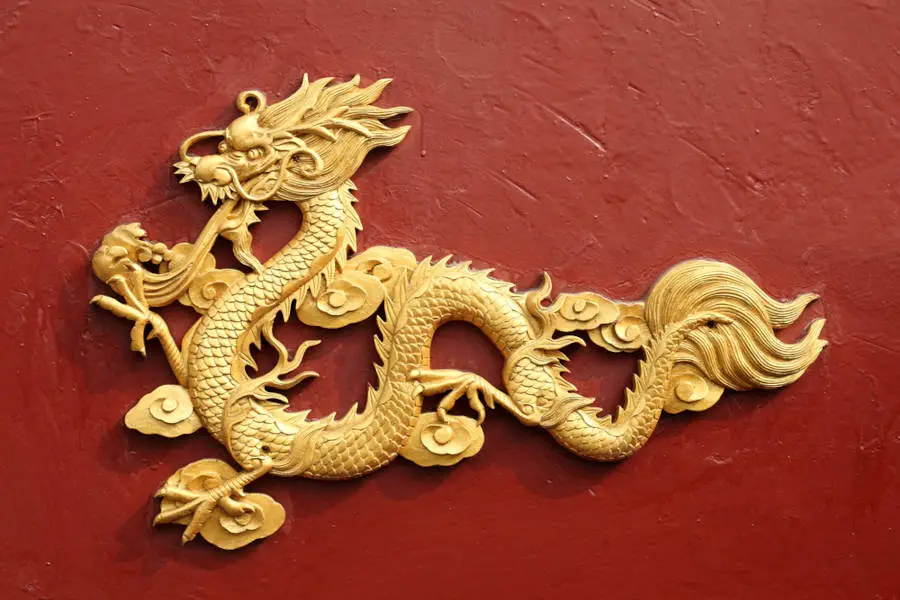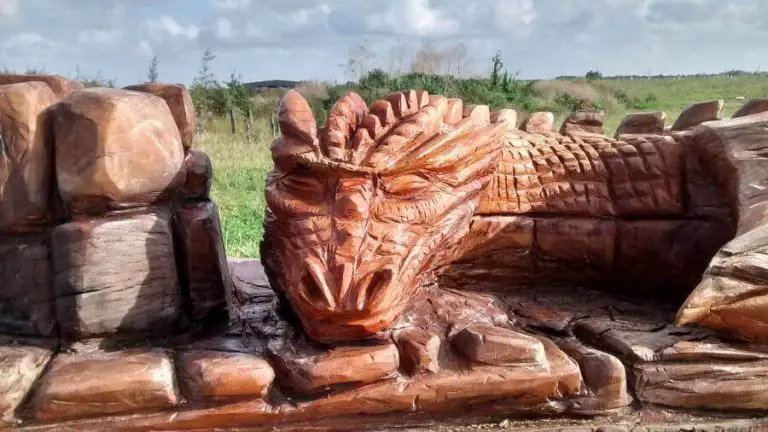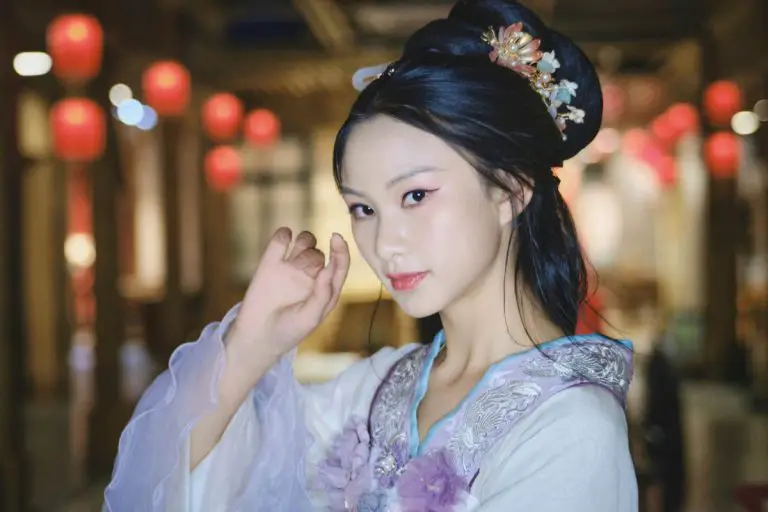Across the vast landscape of Chinese mythology, no creature commands more fascination than the dragon. Serpentine in shape, often without wings yet soaring across the skies, Chinese dragons are unlike anything found in Western fantasy. They are not monsters to be slain or feared. Instead, they are symbols of wisdom, power, and cosmic harmony.
You’ll find them everywhere—from ancient temple roofs curled in graceful arcs, to the swirling lines of silk robes worn by emperors, to the fiery vibrance of dragon dances lighting up Chinese New Year. Their presence is both grand and subtle, embedded deep in the cultural DNA of a civilization that stretches back over 5,000 years.
Chinese dragons, known as “Long” (龙), are not just creatures of myth—they are cultural icons. They live in stories passed from one generation to the next, and in the imaginations of people who see them as protectors, bringers of rain, and emblems of good fortune. These dragons are woven into the rhythm of nature and the structure of society. They are alive in memory, art, and tradition.
To understand Chinese dragons, you must first let go of what you think a dragon is.
In Western tales, dragons often hoard treasure and breathe fire. In Chinese culture, they give rain, chase away evil, and guide the righteous. They are deeply respected, not feared. Rather than chaos, they bring order. Rather than destruction, they nurture growth.
They also represent human ideals. Dragons are often linked with intelligence, strength, and virtue. The emperor was once called the “Son of the Dragon,” a divine title that reinforced the sacred nature of his rule. Even today, being born in the Year of the Dragon is considered especially auspicious, a sign of greatness to come.
Their symbolism runs deep. In art, they appear with clouds and water, signifying their role in controlling the elements. In stories, they take the form of wise kings, fierce guardians, and even compassionate friends.
The dragon is not just a figure from legend—it is a force that has shaped the soul of China for millennia. And the more you learn about it, the more you realize that it is far more than a creature of myth. It is a symbol of identity, power, and cultural continuity.
The Origins of Chinese Dragons
The story of the Chinese dragon begins long before written history. Archaeological evidence suggests that dragon-like figures were revered as far back as 7,000 years ago. In ancient burial sites, jade and pottery artifacts reveal serpentine shapes coiled with grace and intention—clear signs that these creatures held sacred meaning.
One of the earliest and most famous dragon representations was discovered in the Hongshan culture, in what is now northeastern China. There, a jade dragon with a curled body and pig-like head was uncovered in a tomb dating back to around 4700 BCE. This artifact—known as the C-shaped dragon—offers a rare glimpse into the spiritual world of early Chinese societies.
For these ancient peoples, the dragon was more than decorative. It was likely a spiritual symbol, perhaps a totem representing a tribe, or a divine creature connected to nature’s rhythms. Dragons, even then, seemed to be seen as intermediaries between heaven and earth.
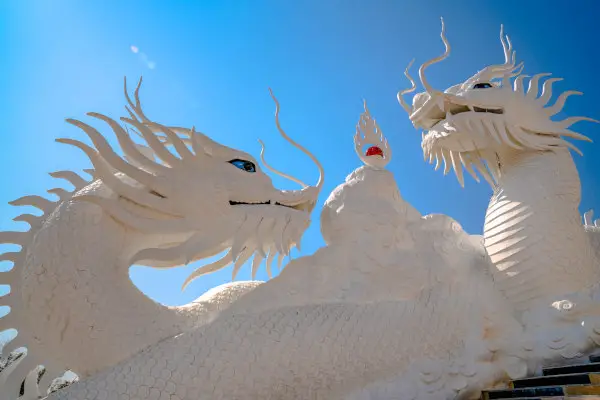
Dragon Imagery in Neolithic Art and Pottery
As early civilizations developed across the Yellow River basin, dragon imagery began appearing more frequently in everyday and ceremonial objects. In the Liangzhu culture of the lower Yangtze region (circa 3300–2300 BCE), jade artifacts often featured complex patterns resembling dragon motifs. These designs suggest not only artistry but belief—dragons were carved into items intended for worship and burial, indicating their role in rituals and cosmology.
Pottery from this era also carries intriguing clues. Long, snake-like creatures appear on urns and vases, their shapes winding elegantly across the surface. These were not random decorations; they reflected the worldview of a people who revered the forces of nature—particularly water, wind, and life-giving rain. The dragon, even in its early forms, was a symbol of harmony between humans and the natural world.
These artistic expressions laid the foundation for what would become one of the most enduring symbols in Chinese history.
How Dragons Became Central to Chinese Mythology
By the time of the Shang and Zhou dynasties (1600–256 BCE), the dragon had firmly established itself in Chinese cosmology. It evolved from a tribal symbol into a celestial being with power over the elements. Ancient texts and oracle bones from these eras mention dragons in rituals connected to rainfall, fertility, and imperial destiny.
It was during this period that the dragon began to merge with other cultural beliefs. Local myths were blended into grand narratives. The dragon’s image grew more defined—horned, clawed, and scaled, often associated with thunder and clouds. This transformation signified more than aesthetic change; it marked the dragon’s rise as a divine force and a national symbol.
One of the most significant shifts came with the legendary Yellow Emperor, or Huangdi. According to myth, he was born of a dragon or even transformed into one upon his death, ascending to heaven. As one of the mythological ancestors of the Chinese people, his link to the dragon further elevated the creature’s status.
From this point forward, dragons were no longer just part of stories—they were protectors of dynasties, controllers of weather, and bearers of imperial authority. They became the thread that wove nature, myth, and politics into a single, powerful symbol.
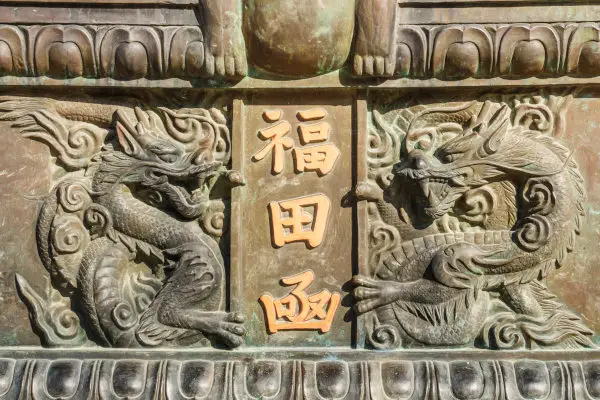
Legends and Folklore Surrounding Chinese Dragons
The Four Dragon Kings: Guardians of the Seas
In Chinese mythology, the Four Dragon Kings are powerful deities who rule over the four great seas surrounding China, each governing a cardinal direction and its corresponding body of water. These kings are not only rulers of the seas but also controllers of weather, rain, and water, essential elements for agriculture and life. Their influence extends beyond the physical realm, impacting both natural phenomena and human fortune.
The Dragon King of the East Sea, Ao Guang (敖廣), is often called the “Grandfather of Dragons” and is associated with the East China Sea and the Yangtze River. He embodies the essence of spring and the wood element. Ao Qin (敖欽), the Dragon King of the South Sea, governs the South China Sea and the Pearl River, symbolizing summer and the fire element. Ao Shun (敖順) rules the North Sea and Lake Baikal, representing winter and the water element, while Ao Run (敖閏), the Dragon King of the West Sea, is linked to Qinghai Lake and the metal element, embodying autumn.
Legend tells of these four brothers, born to the Dragon King, who were assigned their respective seas to govern. Ao Run’s story is particularly poignant; initially, he could not find a sea to rule until the Jade Emperor, moved by his plight, helped create Qinghai Lake, establishing the West Sea as his domain.
Together, the Four Dragon Kings maintain cosmic balance, commanding sea creatures, regulating rainfall, and influencing tides. They interact with humans, sometimes granting blessings or meting out punishments, reflecting their integral role in the natural and spiritual worlds.
The Yellow Dragon and the Birth of the Chinese Nation
One of the most revered figures in Chinese dragon lore is the Yellow Dragon (Huang Long), a celestial creature deeply tied to the origins of Chinese civilization. It is said that this dragon appeared to the legendary Yellow Emperor (Huangdi) and presented him with writing—the beginnings of Chinese characters.
According to myth, the Yellow Dragon emerged from the Luo River and offered the Emperor a scroll inscribed with divine wisdom. In other versions, it carried a mystical diagram that helped shape the Chinese system of governance and philosophy. Its appearance marked an age of enlightenment and unity.
The Yellow Dragon is also credited with guiding the Yellow Emperor to victory in battle and symbolizing the central plains of China—the cradle of Chinese civilization. Its yellow color represents the earth element and imperial authority, reinforcing its importance not just in myth, but in the identity of the nation itself.
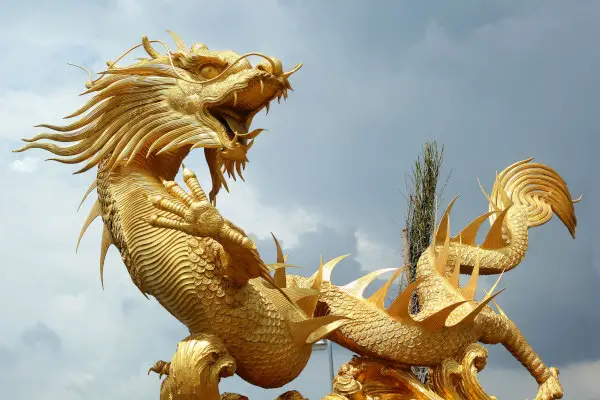
Dragons in the Journey to the West and Other Classic Tales
In the beloved Chinese novel Journey to the West*, dragons take on vivid and unforgettable roles. Perhaps the most famous is the Dragon Prince of the West Sea, who is transformed into a white horse to serve the monk Xuanzang on his sacred journey to India.
This dragon, once punished by the Jade Emperor for his recklessness, finds redemption through loyalty and service. His transformation into a steed symbolizes both humility and transformation—a key theme in the novel.
Dragons also appear in other classic stories as wise mentors, fierce guardians, or divine challengers. In Fengshen Yanyi (The Investiture of the Gods)*, they battle heavenly warriors or lend their powers to heroes. These tales reflect a deeper cultural belief: dragons are not static symbols. They grow, change, and teach, much like the human spirit.
Dragon and the Emperor: Mythical Links to Imperial Power
For centuries, Chinese emperors claimed to be descendants of dragons. This divine connection elevated their status beyond mere mortals. The dragon became a symbol of absolute power, cosmic order, and heavenly approval.
During the Han dynasty, emperors adopted the dragon as a key element in court rituals and iconography. The five-clawed dragon became an imperial emblem, exclusive to the emperor. No one else was allowed to use it; to do so was considered treason.
Palaces were adorned with dragon motifs—coiled on pillars, soaring across ceilings, and etched into thrones. The emperor’s robes were called longpao—“dragon robes”—featuring golden dragons dancing among clouds. Even the imperial throne was referred to as the “Dragon Throne.”
This link between dragon and emperor was more than political. It was spiritual. The dragon legitimized the ruler’s divine right to govern and served as a reminder that his power came from heaven.
The Role of Chinese Dragons in Culture and Society
In Chinese history, dragons were far more than legendary creatures—they were the ultimate emblems of sovereignty and divine authority. For thousands of years, they represented the emperor’s power and were closely associated with the Mandate of Heaven, the belief that a ruler’s authority was granted by cosmic forces.
The dragon was not a shared symbol. Only the emperor was permitted to use the five-clawed dragon. Nobles and officials had to settle for four or three claws. This distinction was more than decorative—it reinforced the strict social hierarchy of the imperial court.
Dragon motifs appeared everywhere within the Forbidden City. They adorned imperial robes, thrones, columns, and even utensils. To the people, these images weren’t just decorative—they were visual proof of the emperor’s sacred status. Even the emperor’s face was called the “dragon face,” and his offspring were known as “dragon sons.”
By placing the dragon at the center of political identity, Chinese rulers shaped an image of power that was celestial, noble, and unchallengeable.
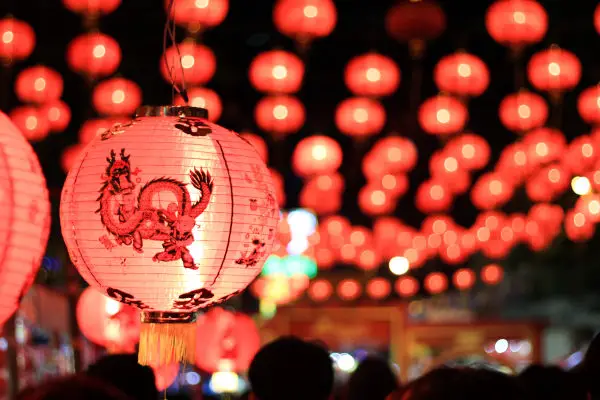
The Dragon in Traditional Chinese Festivals
One of the most vibrant expressions of the dragon’s role in society can be seen during traditional Chinese festivals. The most famous is the Dragon Boat Festival (Duanwu Jie), held on the fifth day of the fifth lunar month. During this holiday, communities across China and beyond race long, ornately decorated boats shaped like dragons.
These races are not just thrilling spectacles—they are rooted in ancient customs meant to appease river spirits and summon rain during planting season. Over time, the festival became associated with the poet Qu Yuan, but the dragon’s presence has always remained at its heart.
Another powerful example is the dragon dance, often performed during Lunar New Year celebrations. Dancers animate large, colorful dragon puppets with poles, bringing the creatures to life as they twist and weave through streets and squares. The movements mimic the flowing motion of dragons in flight or swimming through water.
These dances are believed to chase away evil spirits and bring luck, health, and prosperity for the year ahead. Through them, communities reaffirm their connection to cultural tradition and the dragon’s benevolent power.
Dragons in Chinese Astrology and the Zodiac
The Chinese Zodiac features twelve animals, and the Dragon is the only mythical one among them. People born in the Year of the Dragon are said to be ambitious, intelligent, confident, and charismatic. It’s considered the most auspicious zodiac sign, and many families hope to have children born in dragon years.
The Dragon year occurs every twelve years—2000, 2012, 2024, and so on—and typically sees a spike in birth rates across East Asia. This speaks to the enduring power of dragon symbolism in shaping personal identity and destiny.
In Chinese astrology, dragons are associated with the element of Earth, as well as Yang energy, which is active, bold, and outward-moving. Depending on the year, they also carry a secondary element—Wood, Fire, Earth, Metal, or Water—which influences the personality traits of those born in that cycle.
The dragon’s place in the zodiac is more than symbolic—it’s woven into how people think about life cycles, fortune, and character.
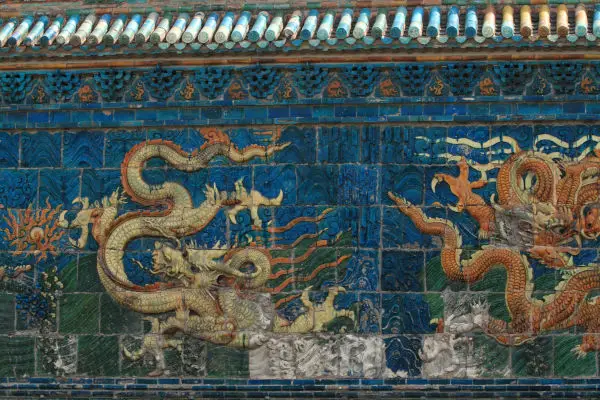
The Influence of Dragons in Martial Arts and Folklore
Chinese martial arts often draw inspiration from animals, and dragons are among the most revered models for movement, power, and spirit. Dragon-style kung fu, developed in southern China, mimics the fluid yet explosive movements associated with the mythical beast.
Practitioners of this style use coiled stances, sudden leaps, and spiraling strikes that echo the imagined way a dragon would fight—graceful but devastating. The dragon’s flexibility and unpredictability are embodied in every motion.
Folklore, too, is rich with tales of martial artists and warriors who draw strength from dragon spirits. In some stories, a master gains wisdom from a dragon in a dream or receives a magical weapon shaped like a dragon’s claw or horn. These stories serve as metaphors for inner power, discipline, and the idea that true strength lies in harmony with nature.
Even in modern kung fu films, dragons remain symbolic of martial excellence and personal transformation, proving that their role in Chinese society is far from outdated.
Types and Forms of Chinese Dragons
The Long: The Classic Celestial Dragon
The Long (龍) is the most iconic and widely recognized form of the Chinese dragon. Regal, intelligent, and deeply revered, this celestial dragon is believed to dwell in the heavens and serve as a guardian of cosmic order. It represents imperial power, nobility, and the link between heaven and earth.
Unlike Western dragons, the Long has no wings, yet it can soar across the sky with ease. It’s often depicted with a long, snake-like body, four legs, antler-like horns, and a flowing beard. Each feature is symbolic: the horns signify strength, the beard wisdom, and the body’s curves the movement of clouds and rivers.
This dragon is traditionally associated with emperors and the divine right to rule. In many artistic depictions, it is shown rising above the clouds, surrounded by celestial flames or chasing a flaming pearl—a symbol of enlightenment and ultimate truth.
The Yinglong: The Winged Dragon of Rain
Yinglong (應龍) stands out from other Chinese dragons for a simple but rare trait—it has wings. According to ancient myths, Yinglong was a heroic dragon who assisted legendary rulers like the Yellow Emperor in great battles. Some legends even say he helped carve the rivers and seas of China by guiding floods and rainstorms.
As a rain deity, Yinglong plays a vital role in Chinese agricultural myths. Farmers would invoke his name during droughts, hoping he would bring much-needed rain to nourish the land.
Although winged dragons are uncommon in Chinese lore, Yinglong represents a powerful fusion of dragon and bird-like traits. His wings symbolize both divine mission and freedom, making him a rare and revered figure among dragon types.
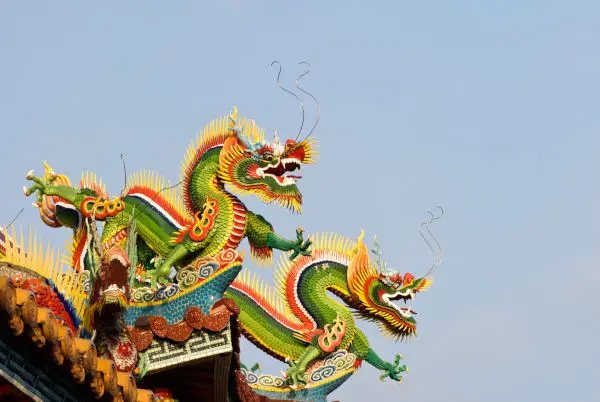
The Shenlong: Spiritual Dragon of Weather and Wind
The Shenlong (神龍), or spiritual dragon, is believed to control wind, rain, clouds, and storms. It is invisible to ordinary people, only revealing itself to worthy individuals or during powerful celestial events. Farmers, emperors, and priests all looked to Shenlong for weather-related blessings.
Shenlong is often blue or green in depictions, reflecting its deep connection with water and the sky. When revered, it brings harmony and balance. But if disrespected, it can unleash destructive storms. This duality made Shenlong both venerated and feared.
Temples dedicated to rainmaking often featured altars or statues of Shenlong, and ceremonies were held to honor him during dry spells. His presence in mythology reminds us of how closely tied ancient China’s spiritual beliefs were to nature’s rhythms.
The Dilong: Earth Dragon of Rivers and Land
The Dilong (地龍) is the dragon of the earth. While celestial dragons ruled the skies, Dilong governed rivers, valleys, and underground water. In Chinese belief, the world was not just watched over by sky-bound creatures—there were dragons beneath our feet as well.
Dilong is closely linked with groundwater and seismic activity. In some traditions, earthquakes were believed to occur when earth dragons stirred or moved. Because of this, Dilong is often respected in rituals concerning land fertility, river management, and even land divination.
Unlike other dragons, Dilong typically does not fly. It stays grounded, embodying the nourishing and sometimes volatile forces of the land. In many ways, it reflects the hidden but vital powers that shape our environment.
The Panlong: Water Dragon of Lakes and Streams
The Panlong (蟠龍) is a coiled or coiling dragon that resides in lakes, streams, and marshes. It is more fluid in form than the majestic Long and is usually depicted in spiraled poses, entwined around rocks or flowing water.
Panlong is a guardian spirit of smaller water bodies, often seen as a protector of natural resources. It is linked with harmony, elegance, and gentle strength. In art, Panlong designs are common in architectural ornamentation, especially on bridges and fountains.
Unlike the more fearsome or commanding dragons, Panlong represents peace and stillness. Its presence is subtle, reflecting the quiet beauty of hidden waters and the life they sustain.
| Dragon Name | Domain/Element | Symbolic Role | Distinct Features |
| Long | Celestial/Heaven | Power, Authority, Imperial Spirit | No wings, long serpentine body |
| Yinglong | Rain/Storms | Bringer of Rain, Winged Power | Only winged dragon in mythology |
| Shenlong | Wind and Weather | Controls Seasons and Weather | Spiraling body, blue/green colors |
| Dilong | Earth and Rivers | Governs Underground Water | Moves through land and rivers |
| Panlong | Lakes and Streams | Peaceful Nature Spirit | Coiled form, water guardian |
Balance of Yin and Yang in Dragon Symbolism
The Chinese dragon is also a powerful symbol of yin and yang, the ancient philosophy of dualism that underlies much of Chinese thought. Though the dragon itself is a yang creature—active, bright, masculine, and energetic—it is rarely depicted in isolation. It is often paired with the phoenix, a yin symbol representing grace, softness, femininity, and peace.
Together, the dragon and phoenix symbolize harmony, often in marriage or partnership. The dragon’s strength is balanced by the phoenix’s elegance, forming the perfect unity of opposites. This reflects the broader belief in balance within the universe—between action and reflection, force and softness, heaven and earth.
The dragon’s flowing movements and shifting forms also illustrate the concept of transformation—a key part of maintaining balance in life. It teaches that true power comes not just from strength, but from flexibility and alignment with the rhythms of nature.
The Dragon in Chinese Art and Architecture
Chinese dragons are a defining feature of traditional architecture, especially in temples and palaces. These structures often showcase ornate dragon carvings on rooftops, beams, and gates, symbolizing protection and spiritual power.
Temple roofs, in particular, frequently display dragons along the ridges, where they appear to soar above the building. These dragons are believed to guard the sacred space, warding off evil spirits and attracting positive energy from the heavens. Their open mouths, flowing whiskers, and curling bodies create a dynamic impression, as if they are alive and watching over those below.
In imperial palaces, such as the Forbidden City in Beijing, dragons are everywhere—from tiled roof decorations to detailed woodwork and floor tiles. The Five-clawed imperial dragon, exclusive to the emperor, dominates these designs. It appears in throne rooms, ceremonial halls, and stone steps, reinforcing the emperor’s divine authority and celestial connection.
These dragons are not just art—they are statements of power, tradition, and a spiritual worldview deeply embedded in the built environment.
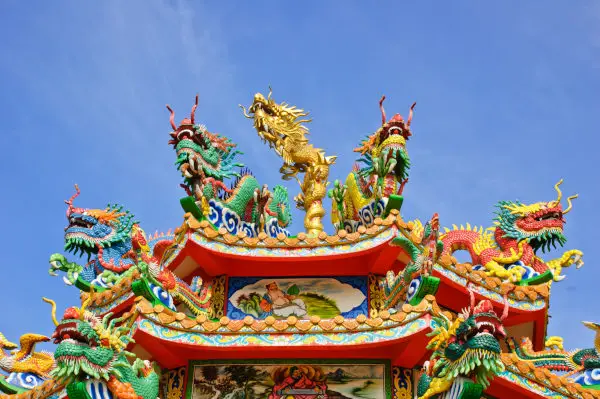
Dragons in Chinese Calligraphy and Painting
In the world of Chinese calligraphy and painting, dragons are both subject and symbol. Artists have depicted dragons for over a thousand years, using flowing brushstrokes to capture their movement, mystery, and majesty.
Dragons in traditional ink paintings are often shown emerging from clouds, coiling through mist, or chasing a flaming pearl. These compositions evoke themes of enlightenment, transformation, and the ever-changing forces of nature.
Calligraphers may also use dragon-inspired brush techniques—long, sweeping lines with sudden bursts of energy—to convey the spirit of the dragon without directly drawing it. These strokes symbolize inner strength, precision, and the control of energy, or qi.
Famous painters from the Song and Ming dynasties created masterpieces featuring dragons, not for fear or fantasy, but to express cosmic harmony, imperial grandeur, or philosophical depth.
Symbolic Use of Dragons in Clothing and Jewelry
Wearing a dragon has long been more than a fashion statement in Chinese culture—it is a display of status, virtue, and spiritual meaning. In ancient times, dragon-embroidered robes, or longpao, were reserved for emperors and crown princes. These garments featured golden dragons spiraling among clouds, each stitch reflecting not just artistry, but authority.
Today, dragon motifs continue to appear in ceremonial clothing, wedding dresses, and traditional outfits during festivals. These designs are used to attract good fortune and show cultural pride.
In jewelry, dragons are crafted in gold, jade, and silver. A dragon pendant* or bracelet* is often worn for protection or to invite strength and prosperity into one’s life. When paired with the phoenix in wedding jewelry, it symbolizes a balanced and happy union.
From ancient dynasties to modern celebrations, dragon adornments carry deep meaning, passed down through generations.
Dragon Motifs in Modern Chinese Design
Dragons remain relevant in contemporary Chinese design, appearing in everything from skyscrapers to sports logos. Modern architects often incorporate dragon-inspired shapes into building layouts, bridges, and interiors. Their coiling form is seen as dynamic and auspicious, bringing motion and energy to otherwise static structures.
In graphic design, dragons are stylized with clean lines and bold colors, blending tradition with innovation. They feature in logos, packaging, branding, and digital media—often used by companies wanting to convey strength, prestige, and cultural identity.
Even in fashion and pop culture, the dragon continues to evolve. It appears on sneakers, streetwear, tattoos, and music videos—not as a relic of the past, but as a symbol of enduring pride and creativity.
By blending ancient symbolism with modern aesthetics, Chinese dragons continue to inspire—and remain a vibrant thread in the fabric of Chinese art and identity.
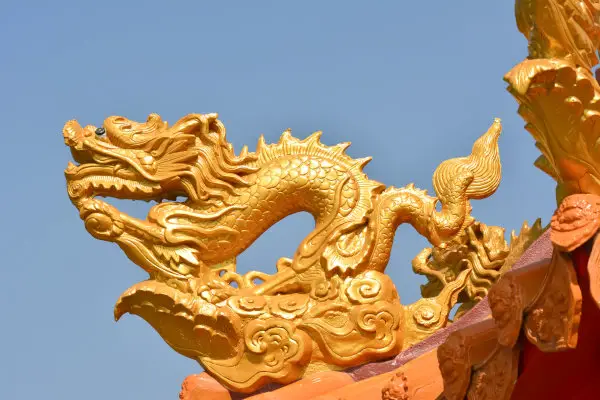
Chinese Dragon vs. Western Dragon
Chinese dragons and Western dragons differ significantly in both appearance and cultural meaning. Chinese dragons, known as Long (龙), typically have long, slender, serpentine bodies covered with fish-like scales, and they lack wings yet can fly. Their features combine parts of various animals-deer antlers, eagle claws, snake necks-creating a composite creature symbolizing power and harmony with nature.
In contrast, Western dragons resemble giant lizards or dinosaurs, often depicted with large bat-like wings, four legs, horns, and the ability to breathe fire. Their bodies are bulkier and more reptilian, emphasizing strength and menace.
Symbolically, Chinese dragons represent auspiciousness, good fortune, wisdom, and imperial authority. They are divine and benevolent beings controlling water, rain, and weather, essential for agriculture and life. Western dragons, however, are often malevolent creatures symbolizing chaos, destruction, and greed. They are frequently portrayed as dangerous beasts to be slain by heroes, embodying evil forces in folklore and mythology.
Benevolent Guardians vs. Fearsome Beasts
Chinese dragons are revered as protectors and bringers of prosperity. They are seen as guardians of natural elements, especially water, and are believed to bring rain, which is vital for crops and survival. Their benevolence is celebrated in festivals like the Dragon Dance, where they are invoked to ward off evil and attract good luck. Even when Chinese dragons exhibit wrath, it is often interpreted as a call for justice or cosmic balance rather than pure evil.
Western dragons, on the other hand, are typically feared as destructive monsters. They breathe fire, hoard treasure, and terrorize villages, often serving as antagonists in myths and legends. Their fearsome nature symbolizes the dangers of greed, chaos, and the unknown. The hero’s quest to defeat a dragon is a common motif, representing the triumph of good over evil.
Cultural Interpretations and Misunderstandings
Because the dragon holds such different meanings in East and West, misunderstandings often arise. To Western audiences unfamiliar with Chinese symbolism, the dragon may seem like a threatening or demonic figure. This misinterpretation can flatten the rich spiritual and cultural significance the dragon holds in Chinese society.
For example, Chinese New Year parades featuring dragon dances might be misread as displays of monster lore, rather than as rituals meant to invite good luck and drive away evil spirits. Similarly, the dragon on the Chinese national flag or in government symbols is not meant to intimidate—it honors tradition, pride, and divine authority.
Understanding these cultural differences is essential in a globalized world. The dragon is a prime example of how one symbol can mean power and peace in one culture, and fear and destruction in another.
By appreciating these nuances, we don’t just learn about dragons—we learn to see through the lens of another worldview.
| Feature | Chinese Dragon | Western Dragon |
| Appearance | Long, snake-like, no wings | Bulky, lizard-like, with wings |
| Temperament | Benevolent, wise, protective | Aggressive, destructive, feared |
| Symbolism | Power, good fortune, nature, balance | Greed, chaos, evil |
| Cultural Role | Revered as divine or royal figure | Often an enemy to be slain |
| Connection to Nature | Rain, rivers, weather, harmony | Fire, caves, ruin |
The Dragon in Modern China and Global Influence
In modern China, the dragon remains a powerful national symbol, deeply tied to cultural identity, pride, and unity. While ancient emperors used the dragon to emphasize their divine right to rule, today it represents the Chinese people as a whole.
Phrases like “Descendants of the Dragon” (龙的传人) are commonly used to express cultural heritage. It’s a way for Chinese people to honor their roots, linking back to thousands of years of mythology, folklore, and dynastic history. The dragon isn’t just a relic of the past—it’s a living emblem of tradition and resilience.
You’ll see the dragon on national costumes, monuments, logos, and official artwork. It continues to stand for dignity, strength, and the enduring spirit of the Chinese nation.
Chinese Dragons in Contemporary Media and Pop Culture
The image of the Chinese dragon has transitioned smoothly into the digital and media age. In films, video games, and animation, dragons appear as noble protectors or ancient forces of wisdom, often with breathtaking designs that blend modern technology with classic motifs.
Movies like Mulan*, Kung Fu Panda*, and Chinese blockbusters such as The Great Wall* have featured dragon-like figures that echo traditional stories while adapting to global audiences. In gaming, Chinese dragons appear in popular franchises like League of Legends* and Genshin Impact*, often as powerful beings rooted in Eastern myth.
Beyond China, the dragon’s influence has gone global. Tattoo artists, fashion designers, and digital creators around the world use the dragon in their work, drawn by its elegance, symbolism, and cultural depth.
Despite its many interpretations, the Chinese dragon always carries an air of nobility, offering a refreshing contrast to the darker, more menacing dragons of Western pop culture.
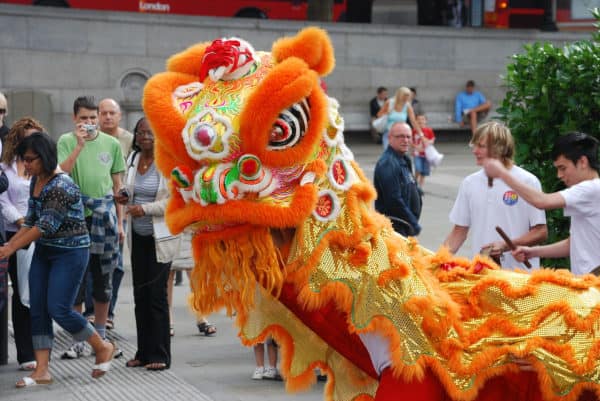
Dragon Dances: Ancient Tradition in a Modern World
One of the most vibrant ways dragons appear in modern life is through the dragon dance, especially during Chinese New Year and cultural festivals. These dances involve teams of performers manipulating a long dragon costume, weaving through streets to the sound of drums, cymbals, and firecrackers.
Traditionally, the dragon dance was performed to chase away evil spirits and welcome blessings. Today, it’s also a key part of Chinese soft power, performed not just in China but at international events, parades, and Olympic ceremonies.
The dance itself has evolved with time. Some performances now feature LED-lit dragons, synchronized music, and modern choreography, blending ancient ritual with modern entertainment. Yet, the core message remains: the dragon brings joy, vitality, and prosperity wherever it moves.
How Chinese Dragons Inspire Art, Film, and Literature Today
Chinese dragons continue to spark creativity in both traditional and contemporary arts. In visual art, modern Chinese painters reinterpret dragons using abstract styles, graffiti, or multimedia installations. The creature’s fluid shape and mythical aura make it a perfect muse for innovation.
In literature, authors weave dragons into fantasy novels, historical fiction, and children’s books. Writers like Laurence Yep* and Grace Lin* have introduced young readers to dragon mythology with stories that celebrate Chinese heritage while appealing to modern sensibilities.
In film, directors use dragons not just for spectacle but to explore themes of identity, family, and cultural pride. The dragon becomes more than a character—it’s a symbol of personal growth and transformation.
Even in architecture and urban planning, dragon symbolism can be found in the layout of cities, bridges shaped like dragons, and buildings designed to reflect feng shui principles.
Across all these platforms, the Chinese dragon is far from fading into legend. It thrives—flexible, ageless, and endlessly inspiring.
| Medium | Example/Use | Cultural Impact |
| Film | Mulan, Hero, Kung Fu Panda | Cultural storytelling for global audiences |
| Architecture | Dragon bridges, rooftop carvings | Blends tradition with modern infrastructure |
| Festivals & Parades | LED-lit dragon dances, Olympics performances | Soft power, cultural diplomacy |
| Fashion & Design | Streetwear, tattoos, high fashion collections | Global trend blending myth and style |
| Literature | Myth-inspired novels, children’s books | Revives folklore for younger generations |
End Words
The Chinese dragon continues to captivate hearts because it represents timeless values-power balanced with wisdom, strength paired with benevolence, and a profound harmony with nature. Unlike many mythical creatures that fade over time, the dragon remains a vibrant symbol deeply woven into the cultural identity of millions. Its presence, from ancient artifacts to modern media, reflects its enduring ability to inspire aspirations for protection, prosperity, and balance.
In today’s rapidly changing world, the dragon’s legacy serves as a bridge between tradition and modernity. It reminds us to respect the forces of nature, to value wisdom alongside strength, and to honor cultural heritage while embracing innovation.
The dragon’s symbolism fosters unity and resilience, encouraging people to face challenges with courage and grace. As a powerful and enduring myth, the Chinese dragon continues to inspire, protect, and bring good fortune to those who embrace its spirit.
Highly recommended books on Chinese mythology available on Amazon that provide rich insights into Chinese dragons and related legends. (Aff.links)
- “The Classic of Mountains and Seas (Shan Hai Jing)“
An ancient Chinese text filled with mythological geography, creatures, and legends, including many early dragon stories. - “Chinese Mythology: An Introduction” by Anne Birrell
A comprehensive and accessible overview of Chinese myths, including detailed sections on dragons and their cultural significance. - “Dragons and Dynasties: An Introduction to Chinese Mythology” by Yuan Ke
This book explores the role of dragons within the broader scope of Chinese mythology and history. - “Chinese Mythology: A to Z” by Jeremy Roberts
An encyclopedic guide to Chinese mythological figures and stories, with extensive entries on dragons and related symbolism. - “Handbook of Chinese Mythology” by Lihui Yang and Deming An
A scholarly yet readable reference covering a wide range of myths, including detailed analysis of dragon myths.
(*) Affiliate links
Stay in Touch
 Join our newsletter by using the forms on this website or click here!
Join our newsletter by using the forms on this website or click here! Follow us on Google News
Follow us on Google News Follow us on Facebook
Follow us on Facebook
Featured Image By Pixabay.com

